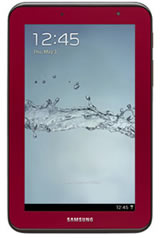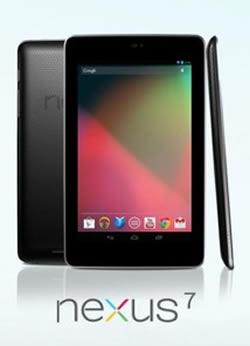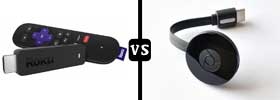Difference between Samsung Galaxy Tab 2 7.0 and Nexus 7
Key Difference: The Samsung Tab 2 7.0 is a 7-inch tablet that offers a PLS TFT LCD display, with approximately 170 ppi density. The device is also available in two versions; Wi-Fi only and Wi-Fi + 4G. The Wi-Fi only tablet is powered by a 1 GHz Dual-core processor and is available with the Android v4.0 Ice Cream Sandwich, while the Wi-Fi + 4G LTE tablet is powered by a 1.2 GHz Dual-core processor and comes with Android v4.1 Jelly Bean. The Nexus 7 is a tablet computer running Android 4.1 (also named Jelly Bean) operating system. It was developed in collaboration with Asus.
 Samsung Galaxy Tab 2 7.0 is a major upgrade to the company’s original Samsung Galaxy Tab. The tab shares many features to its big brother The Galaxy Tab and the Galaxy Tab 7.0 Plus. The tab is actually a downgrade compared to the Galaxy 7.0 Plus, including the price of the tablet. However, during the launch it was also the only Tablet on the market at that time which served the Android Ice Cream Sandwich right out of the box. The device is also available in two versions; Wi-Fi only and Wi-Fi + 4G. Both the devices differ in a few areas so, when purchasing either device, make sure to once look over the various different features that are offered in the Wi-Fi + 4G, which are missing the Wi-Fi only model.
Samsung Galaxy Tab 2 7.0 is a major upgrade to the company’s original Samsung Galaxy Tab. The tab shares many features to its big brother The Galaxy Tab and the Galaxy Tab 7.0 Plus. The tab is actually a downgrade compared to the Galaxy 7.0 Plus, including the price of the tablet. However, during the launch it was also the only Tablet on the market at that time which served the Android Ice Cream Sandwich right out of the box. The device is also available in two versions; Wi-Fi only and Wi-Fi + 4G. Both the devices differ in a few areas so, when purchasing either device, make sure to once look over the various different features that are offered in the Wi-Fi + 4G, which are missing the Wi-Fi only model.
Both the models offer similar dimensions and major features, with the differences being only with the processor speed, OS, camera features and colors. The Samsung Tab 2 7.0 is a 7-inch tablet that offers a PLS TFT LCD display, with approximately 170 ppi density. The Plane to Line Switching (PLS) differs from the IPS technology of the other tablets and while it provides decent wide viewing angles, it still has a high propensity for reflecting surfaces. The display also lags compared to the other IPS displays with higher resolutions. The tablet is small and sleek compared to the other 7-inch devices making it lighter and easier to hold. The device has a sturdy design and has an all-grey plastic back. It has a thick bezel with a light grey screen. The device houses the power button, the volume button and the IR-port on the right side of the device, the microSD card slot is placed on the left side covered by a plastic flap. The 3.5mm jack is on top of the device and docking port is at the bottom.
The Wi-Fi only tablet is powered by a 1 GHz Dual-core processor and is available with the Android v4.0 Ice Cream Sandwich, while the Wi-Fi + 4G LTE tablet is powered by a 1.2 GHz Dual-core processor and comes with Android v4.1 Jelly Bean. Both devices offer 1 GB RAM and are available with 8/16/32 GB internal storage capacity that is expandable by 32 GB. The tablets house a 3.15 MP rear camera and a VGA front camera for video conferencing. The VGA camera is a downgrade from the 2 MP offered on Galaxy Tab 7.0 Plus. The camera also comes with a Flash that is placed under the camera on the back of the device. The 4 LTE tablets also come with additional camera features such as: Smile Shot, Geo-tagging, Editing Modes, Camcorder, DivX, HD Recording, HD Playback, Video Share and Online Image Uploading.
Both the devices sport IR blasters, which allow the tablet to be used as a fully-functioning remote control. The device houses a non-removable Lithium-ion 4,000 mAh that provides a lasts a good amount of time on the Wi-Fi as well as the 4G network. The device is available in black and white on the Wi-Fi + 4 LTE, while an additional Garnet Red color has been added to the line for the Wi-Fi only tablet. Both the models come with various built in Samsung Applications and have been approved for Enterprise by the Company, something known as SAFE (Samsung Approved for Enterprise). This includes an array of business applications such as: Microsoft® Exchange ActiveSync, Virtual Private Network (VPN) Access, Polaris® Office, Video Chat, Cisco WebEx, EAS IT Policy, HW Encryption and Sybase Afaria. However, it lacks in terms of tablet based applications in Google Play. Well, that is not exactly Samsung’s fault but it is one of things that have been keeping pushing sales of Apple tablets more than Android Tablets. Google Play has not been able to offer enough applications that support the tablet format. This problem should only be temporary as the demand for tablets is on the rise in the market.
 Among the number of various companies launching phones based on Google’s Android, Google has also launched its own line of smartphones based on Android, called the Google Nexus. Each device in the Nexus line is produced via collaboration between Google and a leading original equipment manufacturer (OEM) partner. The Nexus devices in general have an advantage over other devices in that the Android in the Nexus devices is pure. I.e. the Android does not have any manufacturer or wireless carrier modifications to it, such as a custom graphical user interface. The Android also has an unlockable bootloader to allow further development and end-user modification, all of which is usually blocked on other Android smartphones.
Among the number of various companies launching phones based on Google’s Android, Google has also launched its own line of smartphones based on Android, called the Google Nexus. Each device in the Nexus line is produced via collaboration between Google and a leading original equipment manufacturer (OEM) partner. The Nexus devices in general have an advantage over other devices in that the Android in the Nexus devices is pure. I.e. the Android does not have any manufacturer or wireless carrier modifications to it, such as a custom graphical user interface. The Android also has an unlockable bootloader to allow further development and end-user modification, all of which is usually blocked on other Android smartphones.
The Nexus 7 is a 7-inch tablet computer running Android 4.1 (named Jelly Bean) operating system. It was developed in collaboration with Asus. It was the first tablet in the Google Nexus series and features a 7-inch (180 mm) display, an Nvidia Tegra 3 quad-core chip, 1 GB of RAM, and 8, 16 or 32 GB of internal storage. The 8 and 16 GB models were Wi-Fi only, and the 8 GB was eventually discontinued. The 32 GB models are both Wi-Fi and 3G compatible. The Nexus 7 was marketed effectively as an entertainment device. The tablet has been designed with gaming purpose in mind and has received high resolution display and various sensors to make it the ultimate gaming tablet. The tablets has dropped the rear primary cameras in the tablet and instead focus on place a 1-2 MP front-facing camera for video chatting purposes. The company has also eliminated the Camera app, so users will have to download an app from third-party developers from Google Play. According to Techradar, the images from the camera were a little grainy, but video calling was seamless, with no lag during calls. The low price of the Nexus 7 makes it a good and cheap companion. The 32 GB is available for USD 199 from the website.
The information for the detailed table about the two phones has been taken from the Samsung website, pcmag.com, engadget.com, Google website and GSMArena.com.
|
|
Samsung Galaxy Tab 2 7.0 |
Nexus 7 |
|
Launch Date |
April 2012 |
June 2012 |
|
Company |
Samsung |
Google; designed in collaboration with and manufactured by Asus. |
|
Size |
193.7 x 122.4 x 10.5 mm |
198.5 x 120 x 10.5 mm (7.81 x 4.72 x 0.41 in) |
|
Display |
7.0 in (18 cm) PLS TFT LCD display |
7.0 inches LED-backlit IPS LCD capacitive touchscreen, 16M colors |
|
Screen |
1024 × 600 pixels (~170 ppi pixel density) |
800 x 1280 pixels, (~216 ppi pixel density) |
|
Protection |
N/A |
Corning Glass |
|
Weight |
345 grams |
340g (11.99 oz) |
|
2G Network |
GSM 850 / 900 / 1800 / 1900 |
GSM : 850/900/1800/1900 |
|
3G Network |
HSDPA 900 / 2100 - GT-P3100 HSDPA 850 / 900 / 1900 / 2100 - GT-P3105 |
WCDMA : 850/900/2100 |
|
4G Network |
Depends on market capability |
N/A |
|
GUI |
TouchWiz UX UI |
Pure Android |
|
CPU speed |
1 GHz Dual-core processor/ 1.2 GHz Dual-core Qualcomm processor (4G) |
Quad-core 1.2 GHz Cortex-A9 |
|
GPU |
PowerVR SGX540 |
ULP GeForce |
|
OS |
Android OS v4.0.3 (Ice Cream Sandwich), upgradable to v4.1.1 (Jelly Bean) |
Android OS, v4.1 (Jelly Bean), upgradable to v4.2.1 (Jelly Bean) |
|
Chipset |
TI OMAP 4430 |
Nvidia Tegra 3 |
|
RAM |
1 GB RAM |
1 GB RAM |
|
SIM Size |
mini-SIM |
Micro-SIM for 3G model |
|
Internal Memory |
8/16/32 GB |
16/32 GB storage |
|
Expandable Memory |
Up to 32GB |
None |
|
Sensors |
Accelerometer, digital compass, light and proximity |
G-Sensor, Light Sensor, Gyroscope, E-compass, GPS, NFC, Hall Sensor |
|
Connectivity |
2G, 3G, 4G, Bluetooth technology v3.0, USB 2.0 Host, Wi-Fi 802.11 a/b/g/n, DLNA and Wi-Fi Direct |
Wi-Fi 802.11 b/g/n Bluetooth NFC (Android Beam) 32GB + Mobile data version only: Unlocked GSM/UMTS/HSPA+ 32GB + Mobile data version only: GSM/EDGE/GPRS (850, 900, 1800, 1900 MHz) 32GB + Mobile data version only: 3G (850, 900, 1700, 1900, 2100 MHz) 32GB + Mobile data version only: HSPA+ 21 Mbps |
|
Data |
GPRS, EDGE, WLAN, Bluetooth, USB |
WiFi, NFC, USB GPRS, EDGE for 32GB + Mobile data version only |
|
Speed |
HSPA+ 21Mbps 850/ 900/ 1900/ 2100 |
HSPA+ 21 Mbps |
|
WLAN |
Wi-Fi 802.11 a/b/g/n, DLNA, Wi-Fi Direct, dual-band, Wi-Fi hotspot |
Wi-Fi 802.11 b/g/n |
|
Bluetooth |
Bluetooth v3.0 with A2DP, HS |
Bluetooth V3.0 |
|
USB |
USB v2.0, USB On-the-go |
Micro-USB |
|
Primary Camera |
3.15 MP, 2048x1536 pixels |
1.2 MP |
|
Secondary Camera |
VGA |
None |
|
Video |
Full HD @30fps |
720p |
|
Camera Features |
|
|
|
Sound Enhancement |
SoundAlive |
None |
|
Audio supported formats |
MP3, AAC, AC-3, AMR, FLAC, MID, WMA, WAV, OGG |
MP3/WAV/eAAC+/WMA player |
|
Video supported formats |
3GP, ASF, AVI, MP4, WMV, FLV, MKV, WebM |
MP4/H.264 player |
|
Battery Capacity |
Non-removable Lithium-ion 4,000 mAh |
Non-removable Li-Ion 4325 mAh battery |
|
Talktime |
2G: 40 hours 3G: 20 hours |
- |
|
Standby Time |
2G: 1190 hours 3G: 1080 hours |
- |
|
Available Colors |
Black, White, Red |
Black |
|
Messaging |
SMS(threaded view), MMS, Email, Push Email, IM, RSS |
Email, Push Email, IM, RSS |
|
Browser |
HTML5, Adobe Flash |
HTML5 |
|
Radio |
No |
No |
|
GPS |
A-GPS support and GLONASS |
Yes |
|
Java |
Java via Java MIDP emulator |
None |
|
Additional Features |
|
|
Image Courtesy: samsung.com, androidheadlines.com









Add new comment